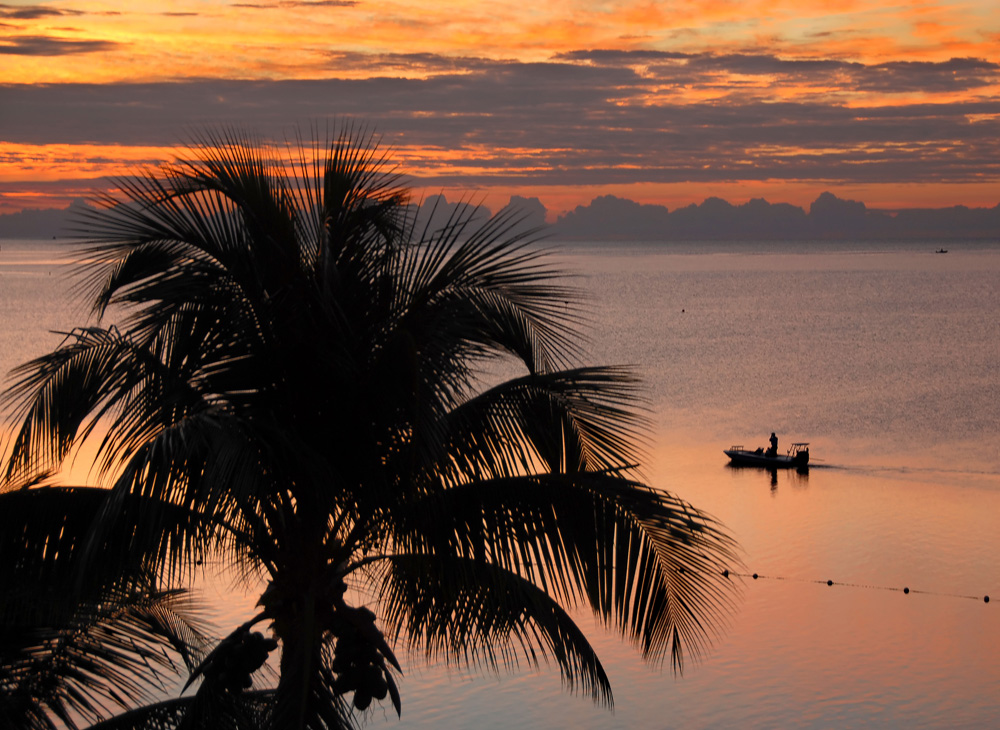Visitors from around the world are drawn to the Florida Keys to experience the island chain’s priceless natural resources. And those of us who live in the Keys are committed to protecting and nurturing those resources — including the continental United States’ only living coral barrier reef, an environmental treasure that runs parallel to our island chain.

For both kids and grownups, exploring the marine environment surrounding the Florida Keys is a must during a visit to the island chain. (Photo by Stephen Frink)
But in addition to being our home, the Keys are an internationally acclaimed vacation destination. So in October, the Florida Keys tourism council is launching the “Connect & Protect” program to encourage you, our visitors, to share our commitment while having meaningful and memorable vacation getaways.
What does that mean? Throughout the coming months, we’ll share ways that you can discover the Keys’ unique natural world, in part through experiential and soft-adventure activities, and form your own connection with that world.
Once you forge a personal connection to the Keys environment, we hope you’ll become motivated to protect and preserve it — by incorporating positive eco-activities and experiences into your stay in the island chain.
At least once each month for the next year, Keys Voices will introduce you to eco-travel offerings, natural experiences, environmental attractions and adventures, simple pleasures and ways you can make a difference while exploring our islands from Key Largo to Key West.
You’ll also find insights and information on our website for visitors, in our monthly e-newsletter, and on our Facebook page and other social media outlets.
 And while the “Connect & Protect” program might be new, the Keys’ passion for protection dates back more than a century. The Key West National Wildlife Refuge was established in 1908, launching a dedicated commitment to long-term environmental stewardship.
And while the “Connect & Protect” program might be new, the Keys’ passion for protection dates back more than a century. The Key West National Wildlife Refuge was established in 1908, launching a dedicated commitment to long-term environmental stewardship.
Since then, milestones have included the 1957 establishment of the National Key Deer Refuge to protect and preserve habitats for wildlife — particularly the tiny Key deer that live only in the Lower Keys — and the 1963 creation of John Pennekamp Coral Reef State Park, America’s first underwater park.
In 1990 the U.S. government created the Florida Keys National Marine Sanctuary, protecting 2,800 square nautical miles of coastal and ocean waters surrounding the entire Keys island chain (including, of course, our precious coral reef).
In recent years, experts have begun spearheading coral restoration efforts in the Keys, steadily restoring endangered corals by replanting new growths from coral nurseries to the reef.

Crane Point Hammock, a unique historic and horticultural site, contains trees and plants found nowhere else in the United States. (Photo courtesy of Crane Point Hammock Museum & Nature Center)
During the “Connect & Protect” program, we’ll introduce you to Keys environmental and wildlife rescue centers such as Marathon’s world-famous Turtle Hospital; ways to enjoy diving and fishing adventures with eco-conscious “Blue Star” operators; sustainable food choices like stone crab claws and locally sourced fish; unforgettable experiences such as kayaking through the tranquil backcountry waters or viewing playful dolphins in the wild; “voluntourism” opportunities including assisting in a coral nursery to enrich your vacation; and much, much more.
As stewards of priceless natural resources, environmentally aware Keys residents practice a culture of conservation while eating, playing, swimming, exploring and simply living each day in our magical 125-mile island chain. With “Connect & Protect,” we invite you to join us.

